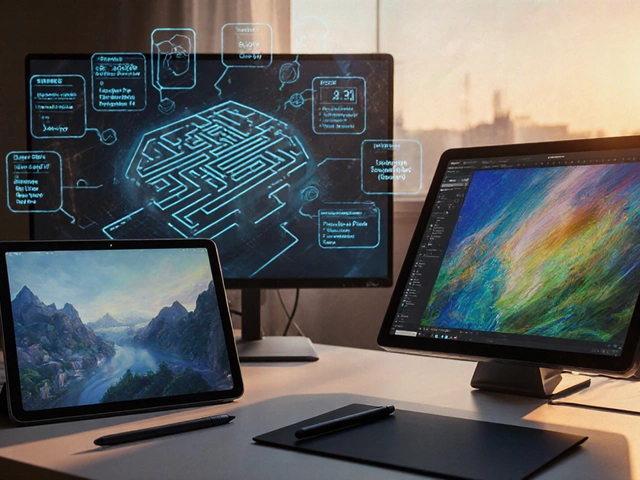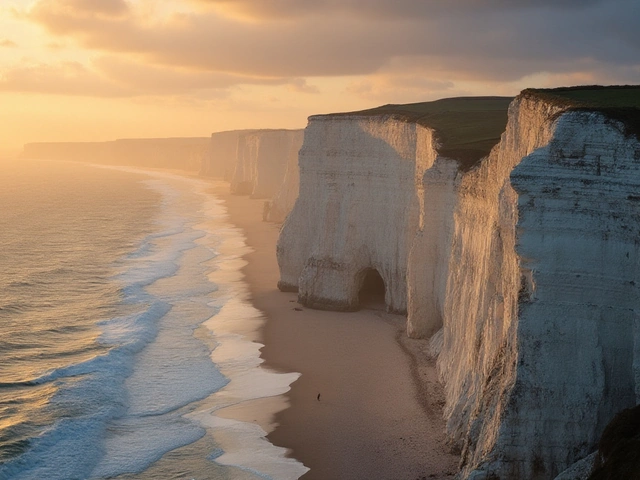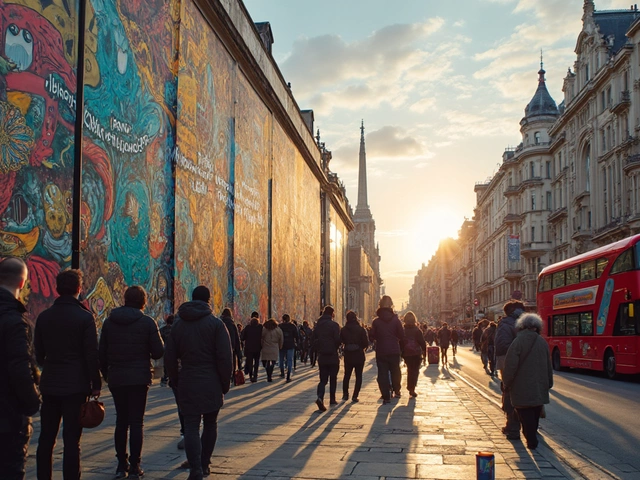Walk into any modern art museum and you’ll spot something weird: a giant red square painted on white canvas, a toilet bolted to the wall, or maybe a bunch of metal rods tangled together. Some folks roll their eyes, others stare in awe, and some just shrug. If you’ve ever whispered, “Is this even real art?”—you’re not alone.
The thing is, modern art doesn’t play by the old rules. It’s often not trying to copy reality or impress you with perfect technique. That’s why it tends to feel confusing, even a bit frustrating, especially if you grew up thinking ‘real art’ was stuff like da Vinci, Rembrandt, or Van Gogh.
This debate isn’t just about taste—it’s about how art has changed over time, and why people argue so much about what makes art legit. I’ll walk you through what’s actually going on, why modern art looks the way it does, and how to judge it for yourself (without pretending to love it or hate it). Even if you think a five-year-old could do it, hang tight—there’s more to the story than meets the eye.
- What Actually Is Modern Art?
- Why Modern Art Looks So Different
- Why People Question If It’s 'Real' Art
- How Modern Art Gets Judged
- Making Up Your Own Mind
What Actually Is Modern Art?
Let’s clear this up: modern art doesn’t mean art that was just made last week. Officially, modern art cuts in around the late 1800s and runs through the mid-1900s. Artists started ditching old habits, like realistic portraits and religious stuff, and tried out wild new approaches—think abstraction, strange shapes, and bold colors. The whole idea was to explore what art could be, not just what it looked like before.
Big names like Pablo Picasso, Henri Matisse, and Marcel Duchamp kicked off some of the biggest changes. Picasso shifted faces and bodies in his paintings until they barely looked human. Duchamp put a signed urinal on display and called it “Fountain”—not a joke, but a challenge to everyone’s idea of art. Matisse painted people and places with colors that didn’t match real life at all, just because he liked how it felt. Each of these moves hammered home one thing: modern art is about expression and experimentation, not pleasing everyone or following old rules.
Here’s what sets modern art apart:
- It’s less about copying real life and more about sharing ideas or feelings.
- Artists use weird materials—everything from newspapers to junk metal.
- There’s usually a bigger meaning or question behind what you see.
- Sometimes it looks unfinished or rough on purpose, making you pay attention to the process, not just the final piece.
So, when someone talks about modern art, picture bold risks, unusual materials, and artists trying to break out of old molds. That’s exactly what kicked off all the debates we’re still having today.
Why Modern Art Looks So Different
If you’re wondering why modern art seems to throw out everything you expect, there’s a reason. Artists started breaking away from the old way of thinking in the late 1800s and early 1900s. Before this, they mostly tried to copy what they saw—real faces, landscapes, and fancy scenes. Suddenly, artists like Picasso and Kandinsky wanted to show feelings, ideas, and even chaos instead of just perfect technique.
Technology and big changes in society also played a huge part. The camera popped up in the 19th century, and overnight, people didn’t need artists just to capture what was real. So, artists set out to do what cameras couldn’t: show moods, questions, and weird stuff that made people think. World wars, fast-growing cities, and shifting values pushed artists to make sense of a world that felt out of control sometimes.
Modern art ditched old school rules about pretty shapes and accurate colors. That’s how you get a plain black square (Kazimir Malevich, 1915), splashes of color that seem random (think Jackson Pollock), or even art made from trash and everyday objects (like Duchamp’s famous urinal in 1917). It isn’t about showing what things look like—it’s about new ways to say something, or sometimes just get people talking.
Here’s a quick breakdown of what helped shape how modern art looks:
- Modern art often leaves out clear stories and details. It can be abstract, messy, or simple on purpose.
- Artists mix up materials—paint, metal, wood, plastic, and even stuff they find lying around.
- There’s often a point behind all the weirdness: Make people feel, shock them, or get them to think about something in a new way.
Check out these examples of famous modern art pieces and what made them different at the time:
| Artist | Work | Year | Big Change |
|---|---|---|---|
| Marcel Duchamp | Fountain | 1917 | Everyday object turned into art |
| Kazimir Malevich | Black Square | 1915 | No subject, just shape |
| Piet Mondrian | Composition II in Red, Blue, and Yellow | 1930 | Abstract blocks, no people or things |
| Jackson Pollock | Number 1A | 1948 | Paint dripped—not brushed—on canvas |
If all this still seems confusing, you’re not alone. Modern artists wanted to open up what art could be. Now, instead of asking “Is it pretty?” or “Does it look real?” people started asking, “What does it mean to me?”
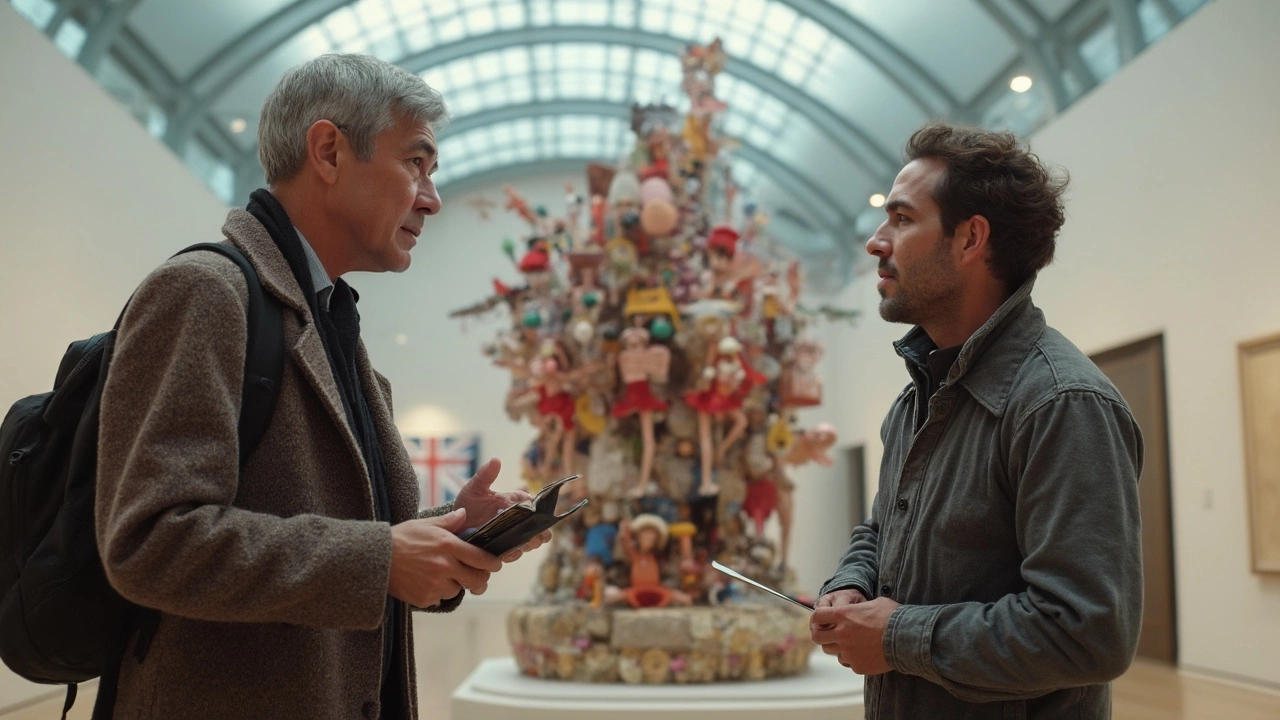
Why People Question If It’s 'Real' Art
The whole argument over modern art being 'real art' kicks off because it messes with expectations. For generations, art was about painting, drawing, or sculpting things that looked like real stuff—people, animals, landscapes, the works. Along comes modern art, and suddenly there’s a plain black square or a pile of bricks on the gallery floor. People wonder if these artists are just trolling everyone, or if they’re missing something huge.
One of the most famous examples is modern art superstar Marcel Duchamp. In 1917, he turned a urinal sideways, called it “Fountain,” and tried to put it in an art show. It didn’t even make the cut. But years later, that urinal is hailed as groundbreaking because it basically asked, “What even counts as art?” This move pushed people to argue if skill, beauty, or even making something with your own hands was still necessary.
Another big reason people get skeptical is the price tag. Take Maurizio Cattelan’s “Comedian”—a banana duct-taped to a wall. That thing sold for $120,000 in 2019! When something so simple goes for so much, folks can’t help but roll their eyes and ask, “What are we actually paying for here?”
- Modern art often leans towards ideas over technique.
- It sometimes uses everyday objects instead of traditional materials.
- Artists want to shock or challenge viewers rather than please them.
In a 2023 survey from Art Basel, 41% of adults said they felt ‘confused’ or ‘annoyed’ when seeing modern art for the first time. This isn’t about being old-fashioned—the goal posts keep moving and people don’t always get the memo.
| Reason For Doubt | Percent of Respondents |
|---|---|
| Lack of obvious skill | 57% |
| Moved away from traditional subjects | 49% |
| High sales prices | 38% |
| Art seems too simple | 33% |
People aren’t just stubborn—they’re reacting to real changes in what gets called ‘art.’ But here’s the thing: questioning it is part of the point. Modern art doesn’t just want you to admire it; it wants you to argue, scratch your head, or even laugh at how weird it is.
How Modern Art Gets Judged
If you’ve ever wondered who decides what’s "good" or "bad" in modern art, you’re not alone. Judging modern art is a mix of gut feelings, expert opinions, and sometimes, social trends. While old-school art was often rated on how real or skilled it looked, the rules changed big time in the 20th century.
Art experts—curators, critics, collectors, and even some artists—look at a few key things:
- Originality: Does the work bring something new? In modern art, being different isn’t just allowed, it’s almost a must.
- Context: Was it a response to what was going on in the world? Pieces like Picasso’s "Guernica" are famous because they say something powerful about their times.
- Concept: Sometimes the idea behind the art is more important than the looks. Marcel Duchamp’s urinal—yep, a real toilet—sparked major debates because it challenged what art could even be.
- Impact: Did it start new trends or get people talking? Pollock’s drip paintings changed how artists thought about making art in the first place.
- Technical skill: Surprised this matters? Even some wild-looking stuff can involve insane skill—think of Andy Warhol’s silkscreen prints.
Auctions and museums put money where their mouths are. Statistically, modern art can fetch outrageous prices; for example, Jean-Michel Basquiat’s “Untitled” sold for $110.5 million in 2017. Here’s a quick look at recent modern art sales that raised eyebrows:
| Artwork | Artist | Year Sold | Price (USD) |
|---|---|---|---|
| Untitled | Jean-Michel Basquiat | 2017 | $110,500,000 |
| Interchange | Willem de Kooning | 2015 | $300,000,000 |
| No. 6 (Violet, Green and Red) | Mark Rothko | 2014 | $186,000,000 |
The catch? The same piece some people call brilliant, others call a joke. There’s no single “right” answer in modern art. But experts usually look for a mix of context, impact, originality, and sometimes, raw skill. That’s a big change from how folks used to judge “real art.”
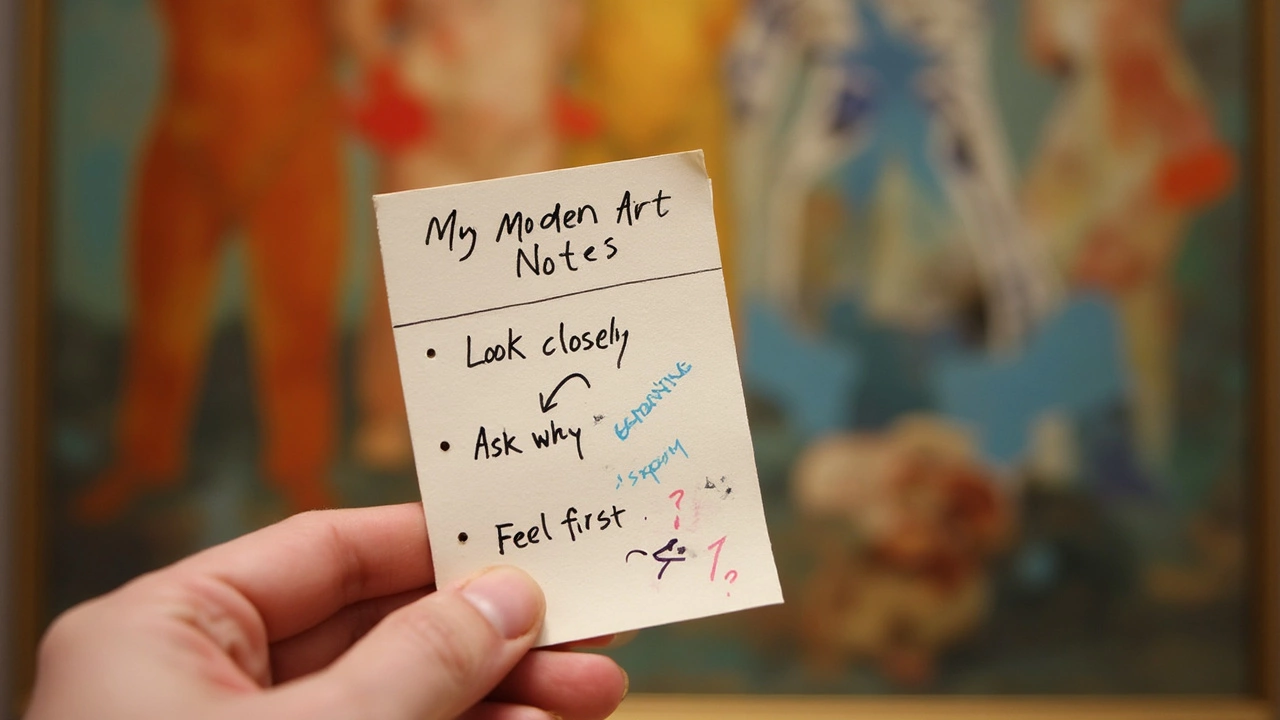
Making Up Your Own Mind
Modern art can spark one person’s excitement and another’s confusion. Here’s the secret: there’s no right answer on what you’re “supposed” to feel. Choosing whether you call modern art “real art” is actually up to you. You don’t need special training to have an opinion—just a bit of curiosity.
First, remember that modern art was created to get people thinking, not just copying what they see. Marcel Duchamp’s “Fountain,” basically a signed urinal, pushed people to ask, “Who decides what art is?” When Jackson Pollock first dripped paint on canvases, critics laughed. Now, Pollock’s canvases are sold at auction for over $140 million. This shows that what counts as art can completely flip within a single lifetime.
If you want to judge modern art for yourself, here are some things you can try:
- Stand in front of a piece and just notice what catches your eye. Is it a color? A weird shape? Something that makes you curious?
- Ask yourself: What is this piece trying to say, or why did the artist choose this style? Sometimes the story behind a piece is more interesting than the looks.
- Look up facts or the artist’s own words if something really grabs you. Even Picasso once said, “Everyone wants to understand art. Why not try to understand the song of a bird?”
- Write down what you actually think instead of what you think you’re supposed to say. Honest reactions can be more fun—and useful—than trying to sound “smart.”
If you’re curious how your views stack up with other people, here’s a quick look at what people say when asked about modern art:
| Survey Year | Percentage Who Say Modern Art is “Real Art” | Percentage Who Aren’t Sure |
|---|---|---|
| 2013 (YouGov, UK) | 50% | 21% |
| 2022 (Statista, US) | 54% | 19% |
This just proves there’s no universal rule—half the public loves it, half don’t, and a bunch are still trying to figure it out. The most important thing is that you’re allowed to form your own opinions about modern art. Don’t let anyone talk you into loving—or hating—something just because it’s labeled art or hangs in a famous gallery. The art world’s biggest changes have come from people trusting their own eyes.


